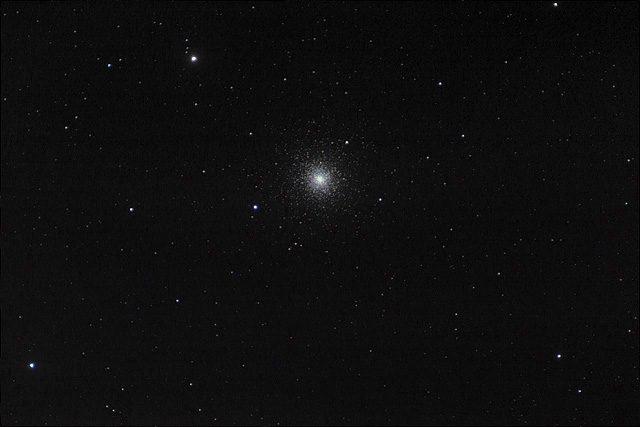|
|
5/9/2010. This evening, the battery reported 12.0v on the digital voltmeter (down from 12.7v when the tender says it's fully charged, 12.6v after the first night, and 12.4v at the beginning of last night). The battery box's voltmeter comes up red, recharge me. Let's say it'll carry the mount and guider for at least 7 hours. Mount, guider, and Canon 50D are all running on nuclear power tonight. I want an M3 I don't have to apologize for, reproduce small, and oversharpen [not there yet]. So I aimed at Arcturus and refined focus with the new focussing mask [take your time!], verified polar alignment in the borescope, slewed to M3, verified composition, calibrated the LVI on the same 6.2 magnitude guide star used for the previous efforts, and began taking 500 second exposures at 9:35. An hour in, I switched down from 0.5 to 0.25 guiding rate. You just have to watch the corrections and be ready to try a few things now and then. Guiding goes meta: you no longer sit and stare into the eyepiece at a star glued to a glowing red crosshair; instead, you watch the error report on the autoguider display and react to that. Half an hour after slowing down the corrections, I nudged aggressiveness in X up a notch. At this declination, I think the mount is good for at least another 90 minutes before the pier becomes a problem beyond the meridian. I took 23 subframes of 500 seconds each. That's 191 minutes. Take away 30-second cooling gaps and you're left with almost exactly 180 minutes of data. At first, I displayed three hours of M3 above, then spent some time working with the better half of the data. In this case, the difference is pretty dramatic. The better tracking achieved by tweaking rates and aggressiveness on the fly paid big dividends in sharpness. Just think if I'd nailed the focus, too. It's getting to be a standard way of working: take the green channel, work it over, then add over-saturated, Gaussian-blurred color data, mix and match for intensity. I wasted a couple of hours trying to work with the three-channel data; in the end I got a result marginally worse than using the green plus color workflow (which took 15 minutes). I may get sick of M3 before I get it right, but I intend to get it right before moving on to other ways of working or other subjects. You've been warned. About the battery: started charging at 7:30 PM, 80% charged at 1:30 AM, full before I next checked it 9 hours later. |
:: top ::
© 2010, David Cortner
